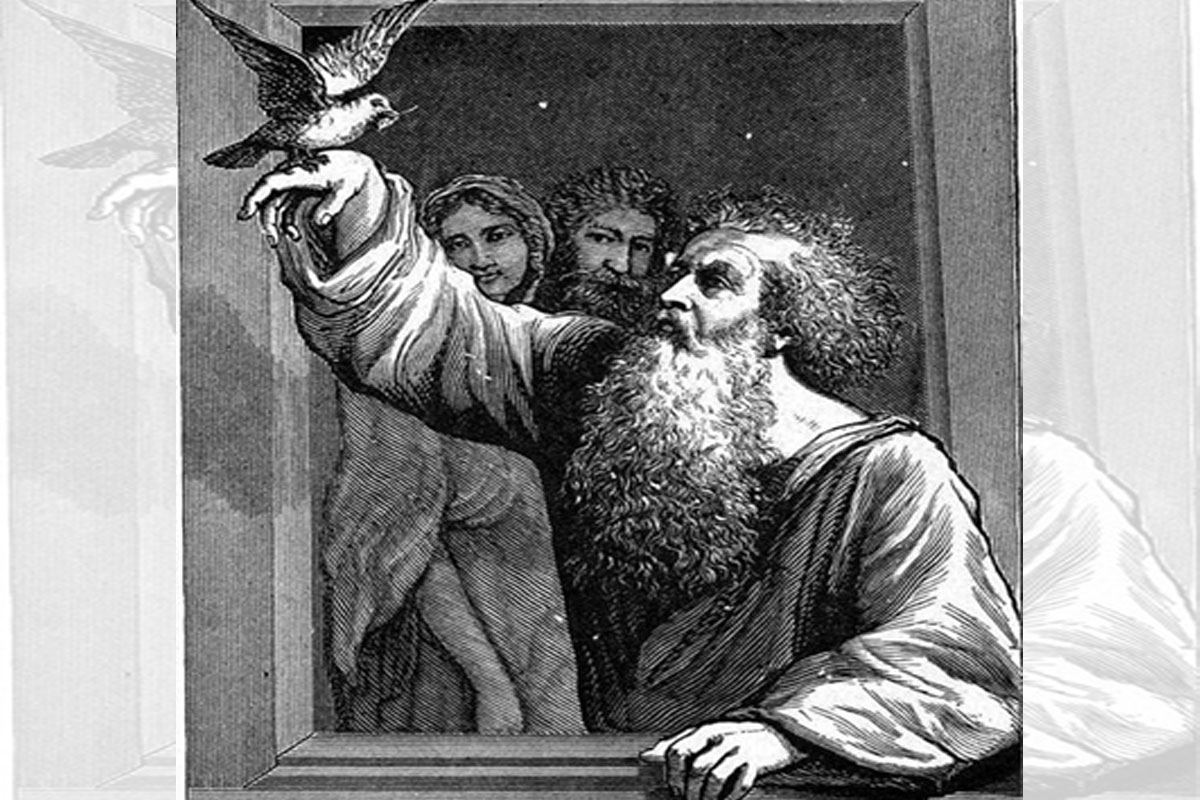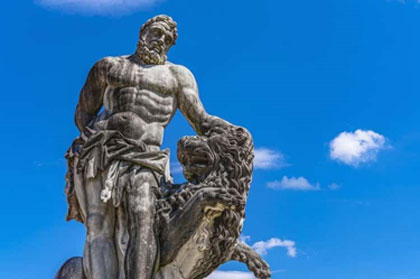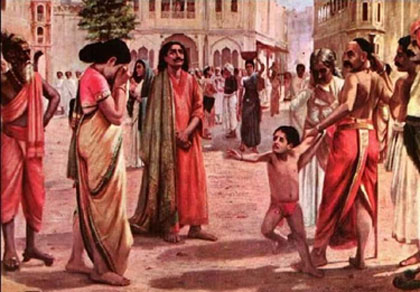
The Bible Stories You Learned In Sunday School Exist In Other Religions
Erin McCann
For thousands of years, human civilizations have exchanged goods and ideas – which explains why all major religions include common motifs and similar stories. Every human endeavor pulls inspiration from the past, and the Bible is no exception.
Tales found in Judaism, Islam, and Christianity share many parallels, as all three religions stem from the teachings of Abraham. But Bible stories borrow from other religions, as well. The Bible is one of the world’s best-selling books, and many people know its stories thanks to Sunday school or holidays such as Christmas. In addition to the variations in these broadly familiar tales as religions expand, Biblical stories have changed even within specific religious traditions.
From new translations and offshoot religious movements to followers misunderstanding common beliefs, the Bible’s legacy is in a constant state of flux. And while devout followers of a particular faith may feel disconnected from people who follow different creeds, many religions teach the same lessons.
________________________________________
• Like Noah, Utnapishtim Built A Large Boat To Survive A Massive Flood
 Photo: Unknown / Wikimedia Commons / Public Domain
Photo: Unknown / Wikimedia Commons / Public Domain
Sometime around 2100 BCE, Mesopotamians began writing the Epic of Gilgamesh, eventually compiling the story into a series of 12 clay tablets. The tale follows Gilgamesh, once the real-life king of Uruk, and his quest for immortality.
After his good friend dies, Gilgamesh seeks out the sage Utnapishtim to learn how he can avoid the same fate. Utnapishtim’s backstory pre-dates the Bible’s tale of Noah’s ark, but the two narratives contain multiple similarities.
In Gilgamesh, wrathful gods unleash a massive flood on Earth, but first warn Utnapishtim of their plan. Utnapishtim constructs a large boat to protect himself, his family, and his animals. After surviving the storm, he sends a bird to seek dry land, just as Noah does with a dove.
Many historians believe this tale, and an actual flood from around 7,000 years ago, inspired the Bible’s story of Noah.
• The Buddha Resisted A Demon’s Temptations, Much Like Jesus In The Desert
 Photo: Francis Chung / Flickr / CC BY 2.0
Photo: Francis Chung / Flickr / CC BY 2.0
Before the Buddha obtained enlightenment, he endured a period of temptation similar to Jesus’s experience with Satan in the desert.
Born sometime around 563 BCE, Prince Siddhārtha Gautama lived a sheltered, privileged life until he met his subjects – and learned about real human suffering. The prince vowed to discover his purpose and left his comfortable home behind to travel the land.
Siddhārtha eventually realized he needed a middle-ground between his former self-indulgent lifestyle and the complete rejection of all worldly pleasantries. So, he sat beneath a fig tree and began meditating.
During this time, a demon named Mara appeared and tried tempting Siddhārtha. Mara brought beautiful women to entice the young man, then tried scaring him away from his searching with scores of demons. Neither tactic worked, nor did Mara’s attempt to sway Siddhārtha by stroking his pride. In overcoming Mara’s temptation, Siddhārtha reached enlightenment and became the Buddha.
• As In Eden, Temptation Forces Enkidu To Leave Paradise, Naked And Ashamed
 Photo: User:FA2010, Thomas Cole / Wikimedia Commons / Public Domain
Photo: User:FA2010, Thomas Cole / Wikimedia Commons / Public Domain
In the ancient Sumerian Epic of Gilgamesh, the titular character becomes king thanks to his incredible strength. The people of Gilgamesh’s kingdom feel he has too much power, however, prompting the goddess of creation to balance Gilgamesh with a rival named Enkidu.
Living away from civilization in the wilds, Enkidu finds contentment in his primitive lifestyle. But after trappers and shepherds complain about being bothered by Enkidu, Gilgamesh sends a harlot named Shamhat to seduce the wild man and teach him civility. After six days together, Enkidu loses his uncultured tendencies and realizes he can no longer abide in the natural world. Once he visits civilization, however, the animals shun Enkidu – forcing him to wear clothing and conceal his nakedness.
Of course, people discovering the concept of nudity, a female temptress, and the forced evacuation of a natural paradise are all motifs in the story of Adam and Eve from the Bible’s Book of Genesis.
• Hercules And Samson Both Possessed Super-Strength And Killed A Lion With Their Bare Hands
 Photo: FelixMittermeier / Pixabay / CC0 1.0
Photo: FelixMittermeier / Pixabay / CC0 1.0
One beloved Bible story follows Samson, an amazingly strong man whose power resides in his hair. Unsurprisingly, many similarities exist between this legend and the story of Hercules from Greek mythology.
A demigod born of a human woman and Zeus, Hercules possesses incredible strength. Like Samson, he kills a lion with his bare hands and overcomes even his most powerful opponents without aid. After suffering a bout of madness brought on by Zeus’s jealous wife Hera, however, Hercules murders his children. Upon coming to his senses, he begins a journey of atonement – taking on 12 tasks to prove his worth.
In addition to killing the lion, Hercules fights the Hydra, obtains a girdle from the queen of the Amazons, frees Prometheus, and travels to the underworld to bring back the three-headed dog Cerberus. As with Samson, Hercules loses his strength because of a lover. Whereas the Biblical hero’s mate Delilah betrays him, someone tricks Hercules’s wife into poisoning her love.
• Remember Jonah? A Large Fish Also Swallowed Saktideva During A Storm
 Photo: Metropolitan Museum of Art / Wikimedia Commons / Public Domain
Photo: Metropolitan Museum of Art / Wikimedia Commons / Public Domain
In the Bible, a massive fish swallows Jonah during a storm. After three days, however, Jonah emerges unharmed and continues his journey. As it turns out, a similar tale appears in Hinduism.
The story begins when Saktideva learns the princess of Vardhamanapura wishes to marry a man who has set eyes upon the “Golden City” – a place no one has ever heard of or visited. Saktideva lies about visiting the Golden City himself, but the princess sees through his deception. So, Saktideva sets out to find it.
Midway through his journey, Saktideva encounters a massive storm – complete with a hurricane – which sinks his vessel. Although his companion clings to a plank until another boat rescues him, a large fish swallows Saktideva. The companion eventually manages to catch the fish, gut it, and free an unharmed Saktideva from its stomach.
• Tower Of Babel Stories Exist In Many Different Religions And Cultures
 Photo: Hendrick van Cleve / Wkimedia Commos / Public Domain
Photo: Hendrick van Cleve / Wkimedia Commos / Public Domain
In the 19th century, a group of Iraqis discovered ruins while digging the foundation for a garden. Years later, German engineers realized the discovery was likely the remains of Etemenanki, a grand structure many believe inspired the Bible’s Tower of Babel.
Babylonians built the tower sometime in the 6th century BCE and dedicated the 300-foot-tall building to the god Marduk. Although many attribute the destruction of the tower to the Persian king Xerxes, historians think the passage of time and lack of upkeep proved its downfall.
The Bible story may contain some historical truth, however, as tales of towers and the sudden separation of languages appear in several religions and cultures. The Hindu “Confusion of Tongues” legend describes a great tree that grew tall and wide to protect people. Eventually, Brahma cursed the tree for being prideful and cut off its branches, scattering them to create differences in language.
An Armenian story, meanwhile, features a group of arrogant giants who build a tower ultimately toppled by God’s wrath. Across the Atlantic, a Mexican folktale describes a tower built to reach the heavens. It failed, however, after fire reigned down from above and the workers suddenly began speaking different languages.
• With A Strong Resemblance To Moses, Dionysus Led His Followers To Freedom From Their Inhibitions
 Photo: Derek Key / Flickr / CC BY 2.0
Photo: Derek Key / Flickr / CC BY 2.0
Often depicted as an older man with a beard, the Greek god Dionysus (AKA Bacchus in Roman mythology) bears a striking resemblance to Moses from the Bible. As the god of agriculture and wine, Dionysus carries a staff that can turn into a snake, and some accounts feature Dionysus and Moses performing similar miracles.
According to Greek legend, Zeus’s affair with a mortal woman led to the birth of Dionysus.
Knowing that to gaze upon a god’s unaltered divine shape is fatal to all mortals, Zeus’s jealous wife, Hera, tricked the woman into seeing his true form, killing her. But the god managed to save his unborn child, placing the fetus in his thigh until the child’s birth.
Growing up, Dionysus remained hidden from Hera. And as an adult, he traveled the land teaching others about winemaking. Although he didn’t physically lead his followers to freedom like Moses, many consider Dionysus a liberator for releasing inhibitions and loosening societal constraints through his love of alcohol and good times.
• Like Abraham, Harishchandra Had To Prove His Worth Through His Son
 Photo: Raja Ravi Varma / Wikimedia Commons / Public Domain
Photo: Raja Ravi Varma / Wikimedia Commons / Public Domain
As with Abraham being tasked to offer up his son in God’s honor, Hinduism includes a story about a man remaining faithful while considering the death of a child.
Stories differ regarding how King Harishchandra came to owe the sage Vishwamitra the rights to his kingdom, but all claim the ruler willfully handed it over. Left with nothing, Harishchandra couldn’t pay the additional fee Vishwamitra required – so he sold his wife and son to a Brahmin. He then took a job at a crematorium, the least respected position in his society.
One day, a snake bit Harishchndra’s son Rohita, killing him instantly. Though devastated when his wife brought Rohita’s remains to the crematorium, the former king stood true to his work and refused to accept the body without charging a fee.
Since his wife had nothing, she offered her clothing as payment. Impressed by Harishchandra’s adherence to the rules, Vishwamitra and Vishnu decreed Harishchandra and his wife fit to be gods – and brought Rohita back to life.
• Brahma, Vishnu, And Shiva Form The Holy Trinity Of Hinduism
 Photo: Los Angeles County Museum of Art / Wikimedia Commons / Public Domain
Photo: Los Angeles County Museum of Art / Wikimedia Commons / Public Domain
Similar to the Christian dogma of the Trinity, Hinduism features three great deities atop their religious hierarchy. Although the Christian version entails the same god split into three entities, Hinduism includes distinct deities working together to keep the world in balance. Brahma, Shiva, and Vishnu make up Hinduism’s trinity, with Brahma acting as the creator, Shiva the destroyer, and Vishnu the preserver of order.
The worship of Shiva – a four-armed deity known for destroying things – may seem strange to those in the West. But as with the concept of yin and yang, breaking things down is necessary for rebirth. Shiva balances Vishnu, a bejeweled king who protects Earth and its inhabitants from evil.
Brahma, meanwhile, has four heads and created the universe. People who adhere to Hinduism, however, do not worship him as much as Vishnu and Shiva. Although the explanations for this vary, it’s either a punishment for Brahma’s lustful treatment of women or because many consider the creation of the universe finished work.
• ‘The Book Of Proverbs’ Parallels The Egyptian ‘Instruction of Amenemope’
 Photo: Osama Shukir Muhammed Amin FRCP(Glasg) / Wikimedia Commons / CC BY-SA 4.0
Photo: Osama Shukir Muhammed Amin FRCP(Glasg) / Wikimedia Commons / CC BY-SA 4.0
In 1888, an archeologist obtained an ancient Egyptian papyrus for the British Museum. Researchers didn’t attempt to translate it, however, until years later – when they discovered the text contained many similarities to the Bible’s Book of Proverbs.
Scholars named the Egyptian text the Instruction of Amenemope, after the supposed author who inscribed 30 wise sayings. According to historians, the text predates Proverbs, though most believe Solomon was aware of Amenemope’s writings when he created his collection of wisdom.
The parallels appear between Proverbs 22:17-23:12, and include “Do not rob the poor because they are poor, or crush the afflicted at the gate” (Proverbs 22:22) and “Guard yourself from robbing the poor, from being violent to the weak” (Amenemope 4.4-5).
ranker.com






















